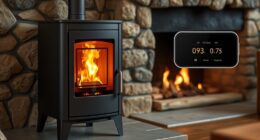When it comes to staying warm in the winter, a wood stove fan is a must-have tool. Just like any device, it may encounter some issues occasionally. But don’t worry! I’m here to assist you in effectively resolving any problems with your wood stove fan.
In this guide, I’ll walk you through troubleshooting common problems and repairing the motor. With a little know-how and some simple tools, you’ll have your wood stove fan up and running in no time.
Let’s get started!
Key Takeaways
- Excessive noise from the fan can be resolved by cleaning or lubricating the motor.
- Loose blades should be tightened or replaced to ensure proper functioning.
- Regular maintenance, such as cleaning the motor and fan blades, is necessary to prevent build-up of dust and debris.
- If troubleshooting techniques do not solve the issue, replacing the motor or control switch may be necessary.
Common Issues With Wood Stove Fans
I’ve noticed a few common issues with wood stove fans. One of the most common problems is excessive noise coming from the fan. This can be caused by a variety of factors, such as loose blades, worn bearings, or a build-up of dust and debris. To fix this issue, start by cleaning the fan thoroughly, ensuring that there’s no dirt or debris obstructing the movement of the blades. If the noise persists, check the fan blades for any signs of damage or wear. Tightening any loose screws or replacing worn bearings may also help reduce the noise.
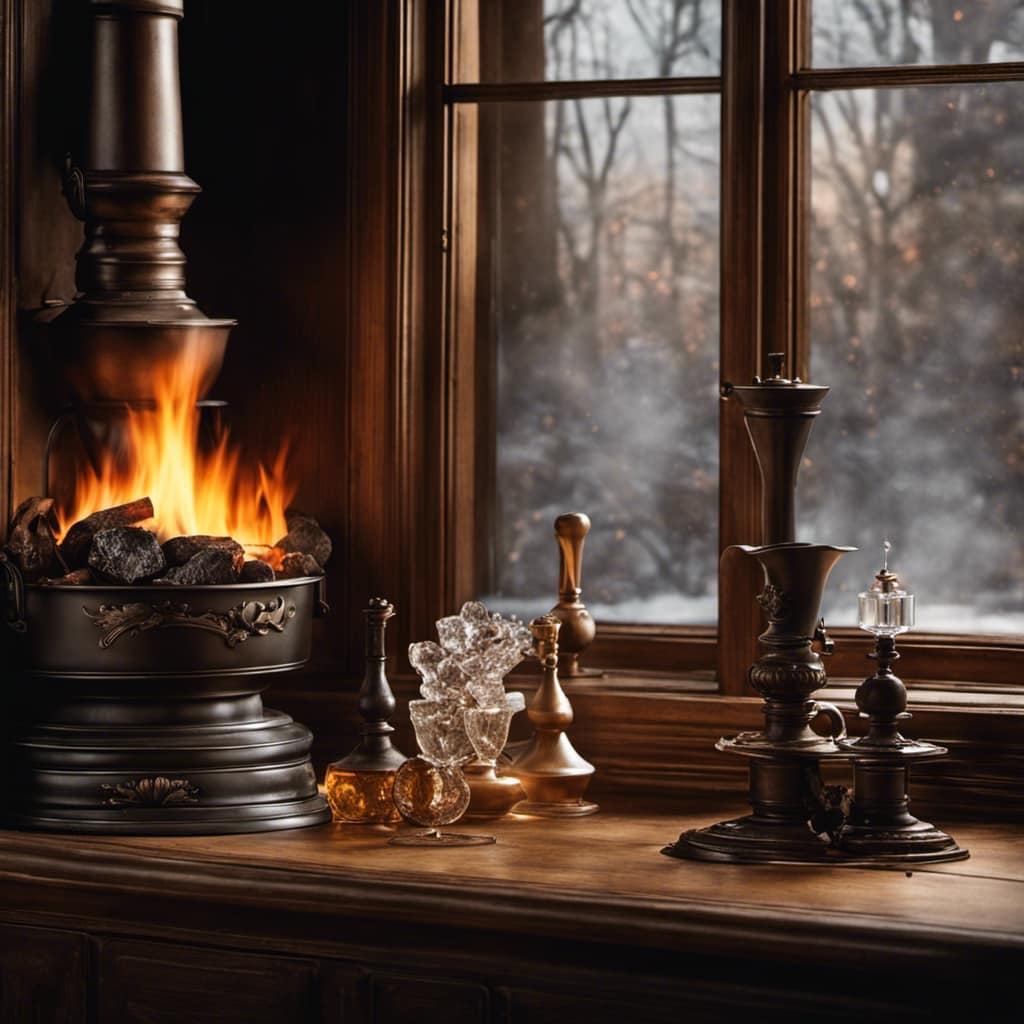
Another common issue is when the wood stove fan fails to spin. This can be due to a faulty motor or a loose connection. In this case, it’s important to check the electrical connections and ensure that the motor is functioning properly. If necessary, replace the motor or seek professional assistance.
Tools and Materials Needed for Repairing a Wood Stove Fan
To repair my wood stove fan, I’ll need a few tools and materials. When it comes to fixing wood stove fans, it’s important to have the right equipment to ensure a successful repair.
Firstly, I’ll need a screwdriver, preferably a Phillips head, to remove any screws securing the fan in place. Additionally, a wire brush or a soft cloth will be useful for cleaning any debris or dust that may be causing the fan to malfunction.
To lubricate the fan’s bearings, I’ll require a high-quality lubricant. Safety precautions must be taken during the repair process, such as wearing protective gloves to avoid any injuries.

With these tools and materials at hand, I’m ready to begin troubleshooting my wood stove fan.
Now, let’s move on to the step-by-step guide to troubleshooting a wood stove fan.
Step-by-Step Guide to Troubleshooting a Wood Stove Fan
As I troubleshoot my wood stove fan, I’ll follow this step-by-step guide to identify and resolve any issues. First, I’ll check the power source and ensure it’s connected properly. If the fan still doesn’t work, I’ll move on to inspecting the blades for any damage or obstructions. If the blades are damaged, a replacement may be necessary. Here are some troubleshooting techniques to consider:
| Troubleshooting Techniques | Fan Blade Replacement |
|---|---|
| Check power source | Inspect for damage |
| Remove any obstructions | Replace if necessary |
If the blades are in good condition, I’ll check the motor and wiring for any faults. If needed, I’ll clean or lubricate the motor to ensure smooth operation. In some cases, the issue may lie with the control switch or thermostat, which may require replacement. By following these steps, I can effectively troubleshoot and fix any issues with my wood stove fan.
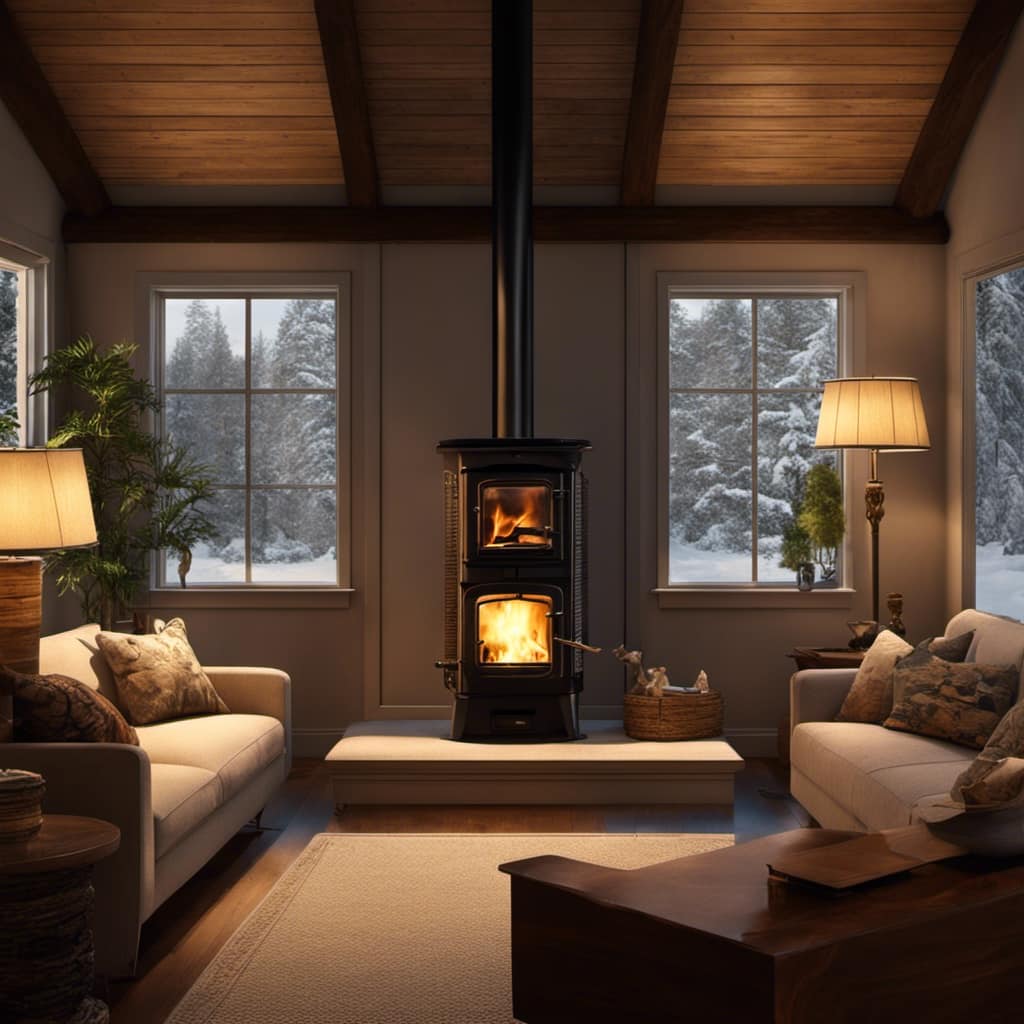
Repairing a Wood Stove Fan Motor
If the motor of my wood stove fan isn’t functioning properly, I may need to repair or replace it. One common issue with the motor is a buildup of dust and debris, which can hinder its performance.
To address this, I first ensure the fan is unplugged and then carefully clean the motor using a soft brush or compressed air. If the motor still doesn’t work, I may need to replace it.
Another issue that can arise with wood stove fans is worn or damaged blades. If the blades aren’t spinning or are making unusual noises, I may need to replace them.
Regularly cleaning the motor and promptly replacing worn blades are essential maintenance tips to prevent future issues with your wood stove fan.
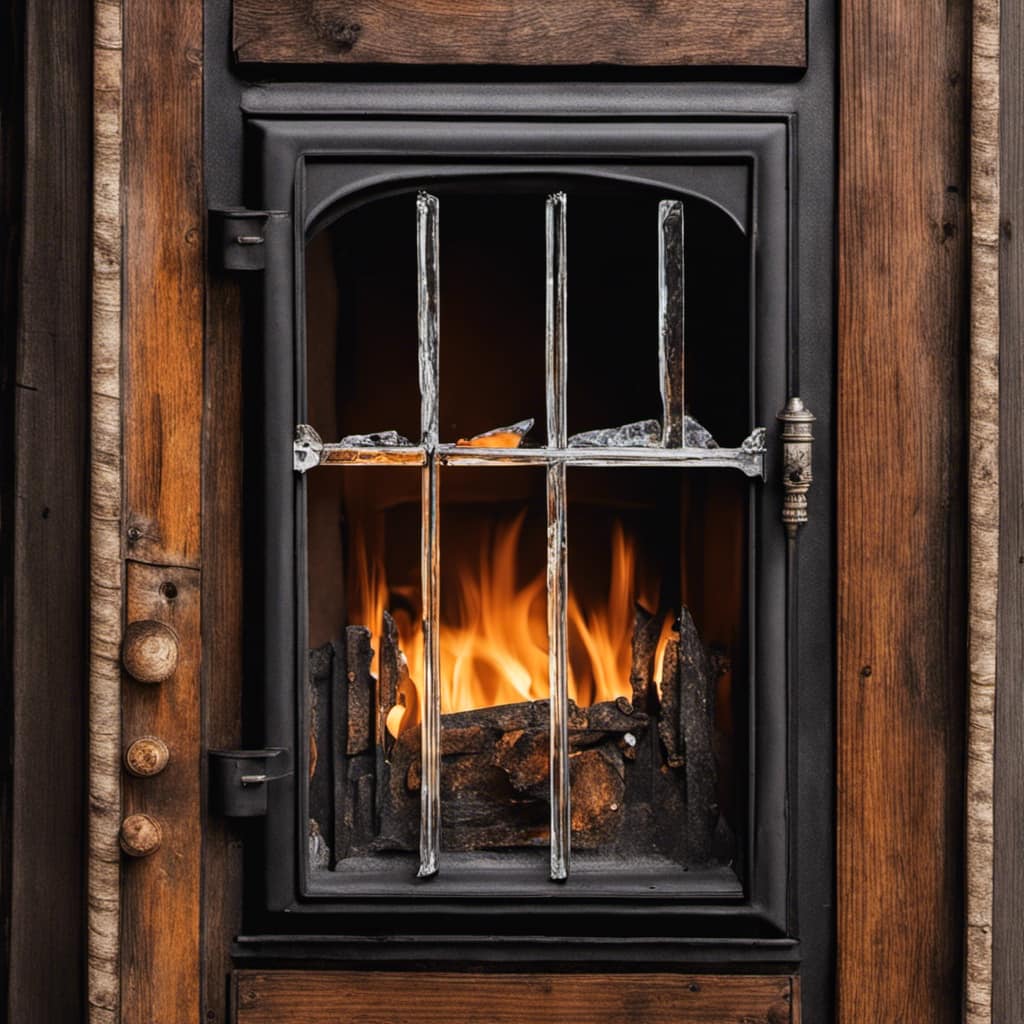
Maintenance Tips to Prevent Future Issues With Your Wood Stove Fan
Regularly cleaning the motor and promptly replacing worn blades help prevent future issues with my wood stove fan. Here are three maintenance tips to ensure the longevity and optimal performance of your wood stove fan:
Preventing Overheating: Check for any obstructions around the fan that may restrict the airflow. Clear away any debris or dust that accumulates on the fan blades, as this can cause the motor to overheat. Ensure that the fan is properly positioned to allow for adequate ventilation.
Cleaning and Lubrication: Regularly clean the fan blades and motor housing using a soft cloth or brush. Remove any dirt or grime that may have built up over time. Additionally, lubricate the fan motor bearings with a few drops of oil to maintain smooth operation.
Inspecting and Replacing Blades: Periodically inspect the fan blades for signs of wear or damage. If the blades are worn, bent, or cracked, replace them promptly to prevent further issues and ensure efficient airflow.
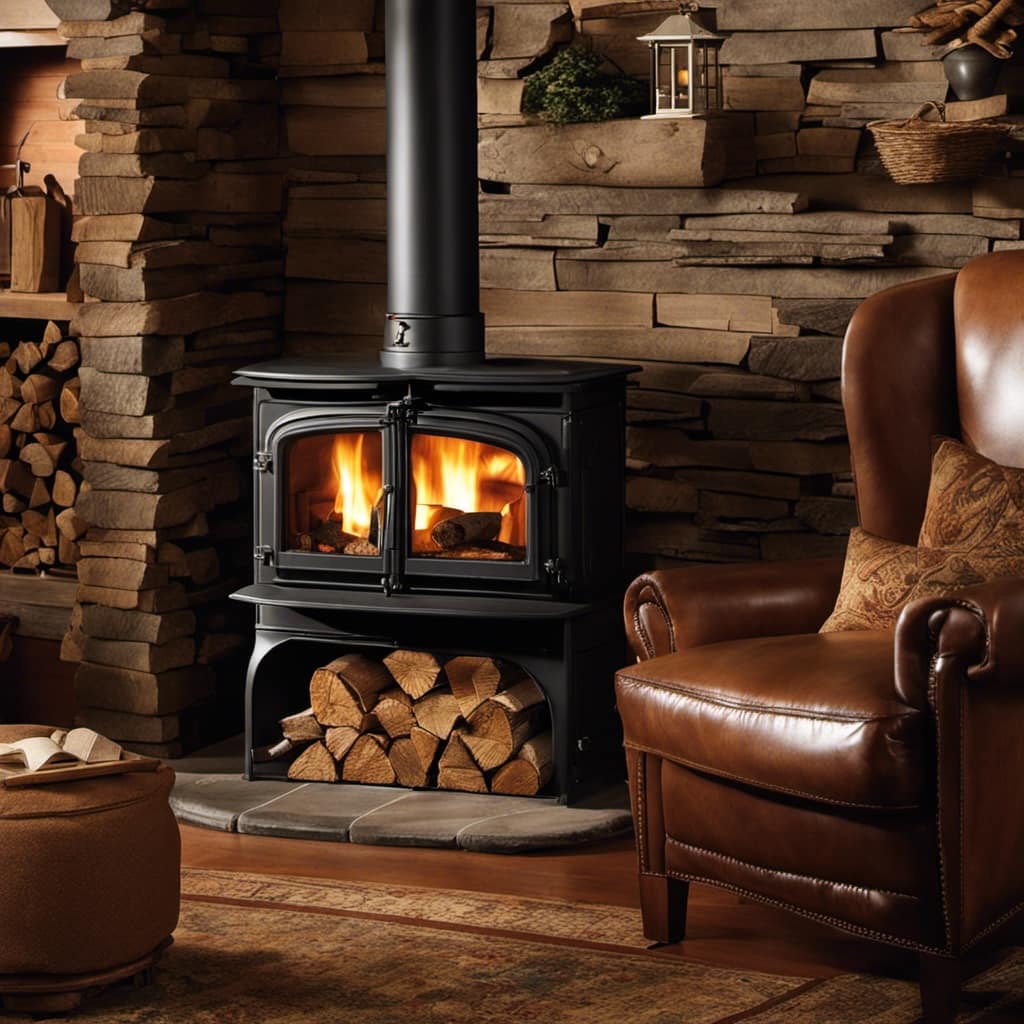
Is Proper Ventilation Necessary for the Functioning of a Wood Stove Fan?
Proper ventilation is essential for the optimal functioning of a wood stove fan. It is crucial to vent wood stove out wall to ensure that the fan can effectively circulate warm air throughout the room. Without adequate ventilation, the fan may not be able to operate at its full potential.
Frequently Asked Questions
How Do I Clean and Maintain the Blades of a Wood Stove Fan?
To clean and maintain the blades of a wood stove fan, start by unplugging the fan and removing the blades. Use a damp cloth to wipe away any dust or debris, then dry thoroughly before reattaching the blades. Regular blade maintenance is crucial for optimal performance.
Can I Replace the Motor of a Wood Stove Fan on My Own?
Yes, I can replace the motor of a wood stove fan on my own. Troubleshooting the wood stove fan motor is crucial before replacing it. It’s essential to follow precise instructions and ensure proper safety measures.
What Are the Signs That Indicate a Faulty Thermostat in a Wood Stove Fan?
Common thermostat problems in a wood stove fan include inconsistent temperature readings, failure to turn on or off, and erratic behavior. Troubleshooting a faulty thermostat involves checking for loose connections, replacing batteries, or replacing the thermostat altogether.
Is It Possible to Increase the Speed of a Wood Stove Fan?
Can the speed of a wood stove fan be increased? Increasing the fan efficiency can help distribute heat more effectively, resulting in faster warming of the room. This has numerous benefits, such as improved comfort and reduced energy consumption.
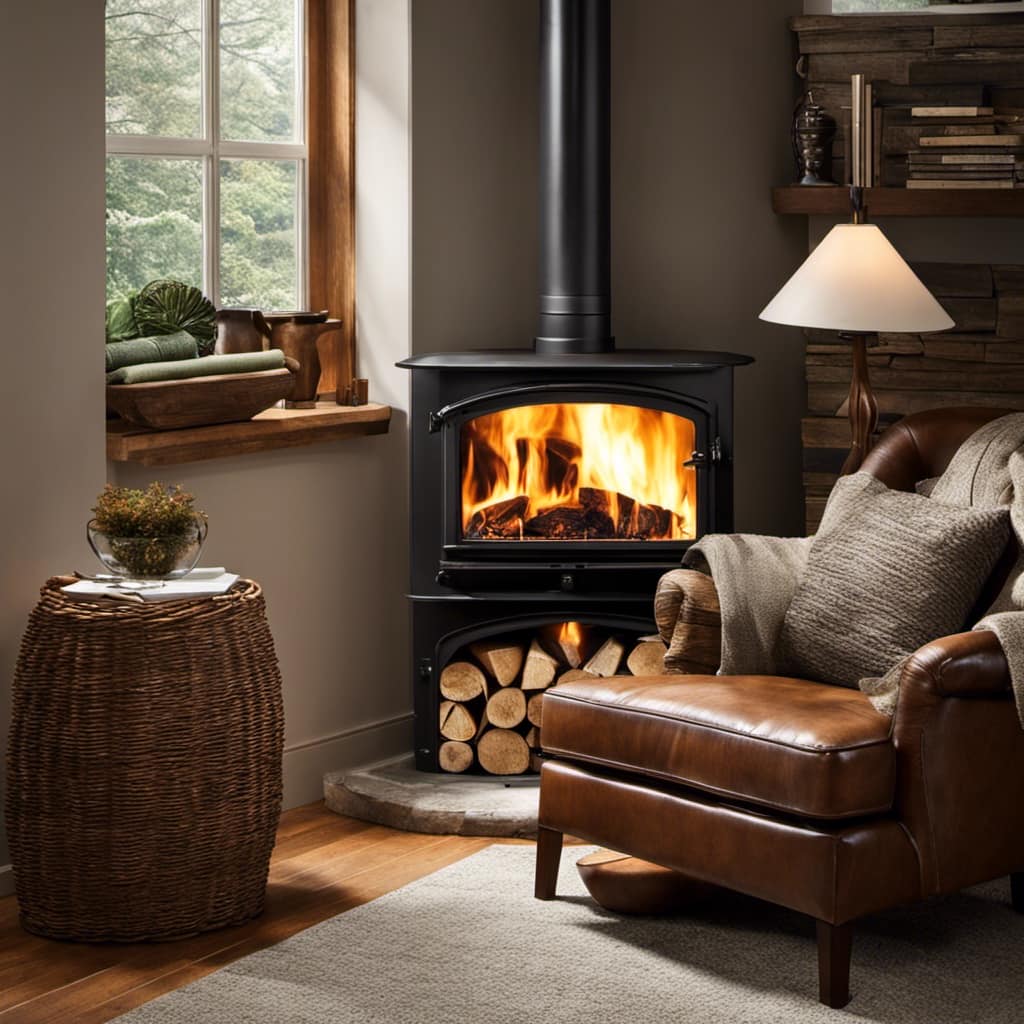
How Do I Troubleshoot a Wood Stove Fan That Is Not Spinning at All?
When a wood stove fan isn’t spinning at all, it’s essential to troubleshoot the issue. By following some common troubleshooting tips, you can identify and resolve the problem causing the fan to remain still.
Conclusion
In conclusion, properly maintaining and repairing your wood stove fan can help ensure its efficient and continuous operation.
Did you know that according to a study conducted by the U.S. Environmental Protection Agency, using a wood stove fan can increase the efficiency of your wood stove by up to 40%?
By following the troubleshooting steps and performing regular maintenance, you can extend the lifespan of your wood stove fan and enjoy the benefits of a more efficient heating source.
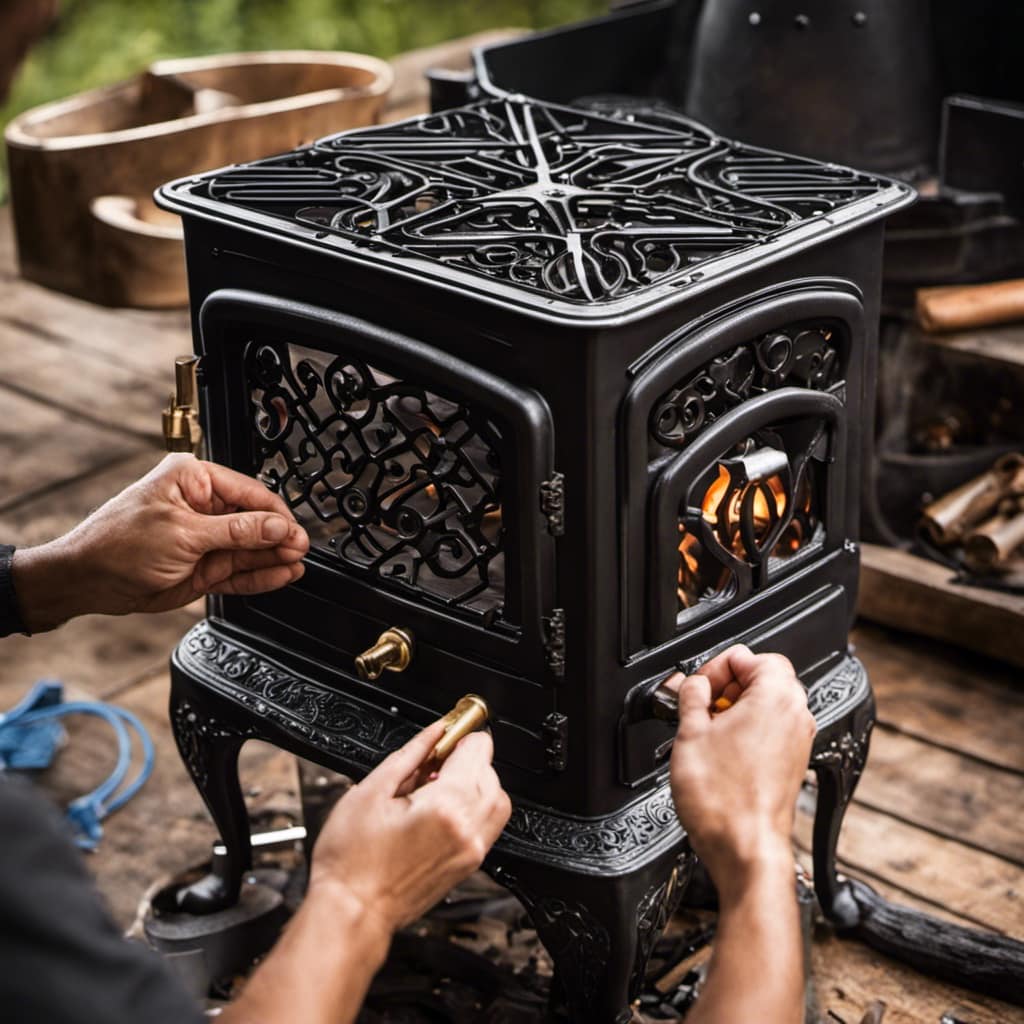
Growing up surrounded by the vast beauty of nature, Sierra was always drawn to the call of the wild. While others sought the comfort of the familiar, she ventured out, embracing the unpredictable and finding stories in the heartbeat of nature.
At the epicenter of every remarkable venture lies a dynamic team—a fusion of diverse talents, visions, and passions. The essence of Best Small Wood Stoves is crafted and refined by such a trio: Sierra, Logan, and Terra. Their collective expertise has transformed the platform into a leading authority on small wood stoves, radiating warmth and knowledge in equal measure.








